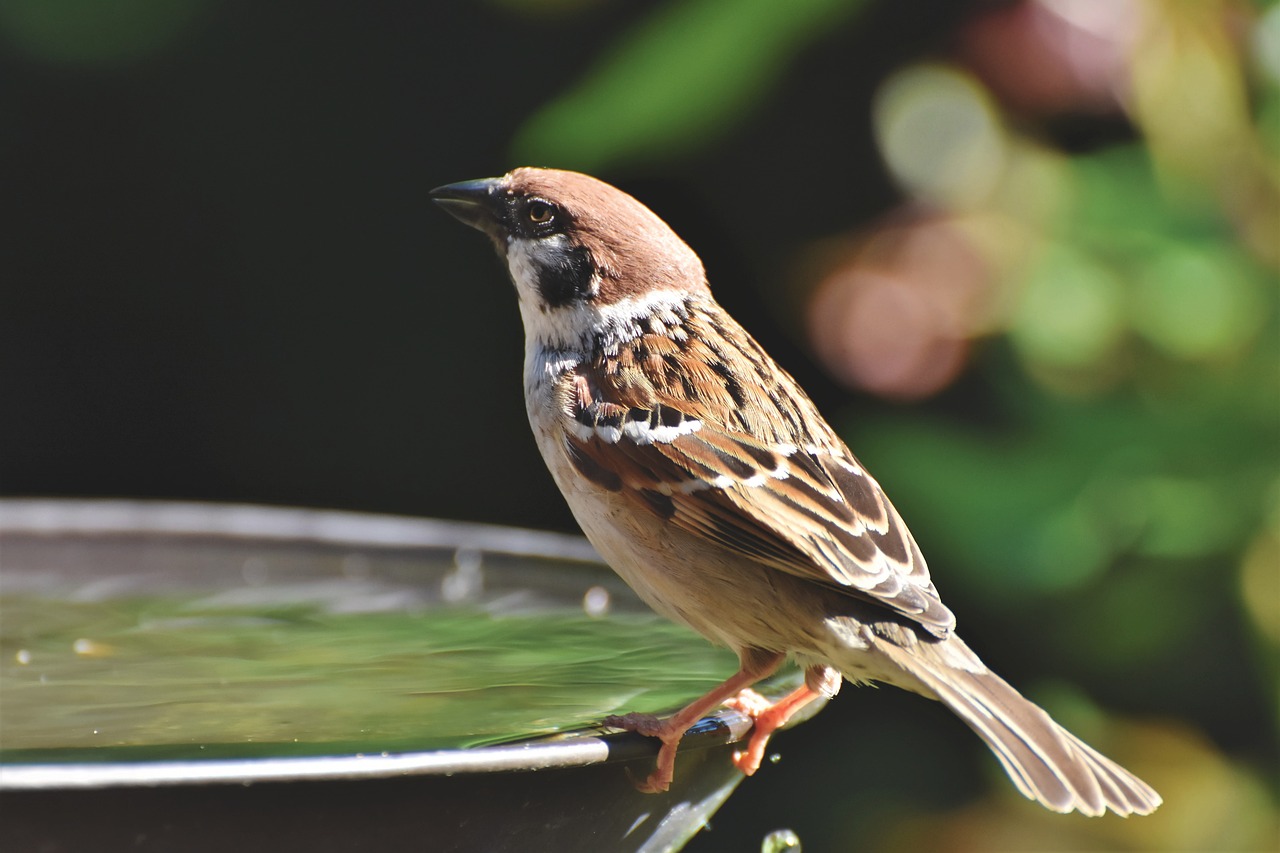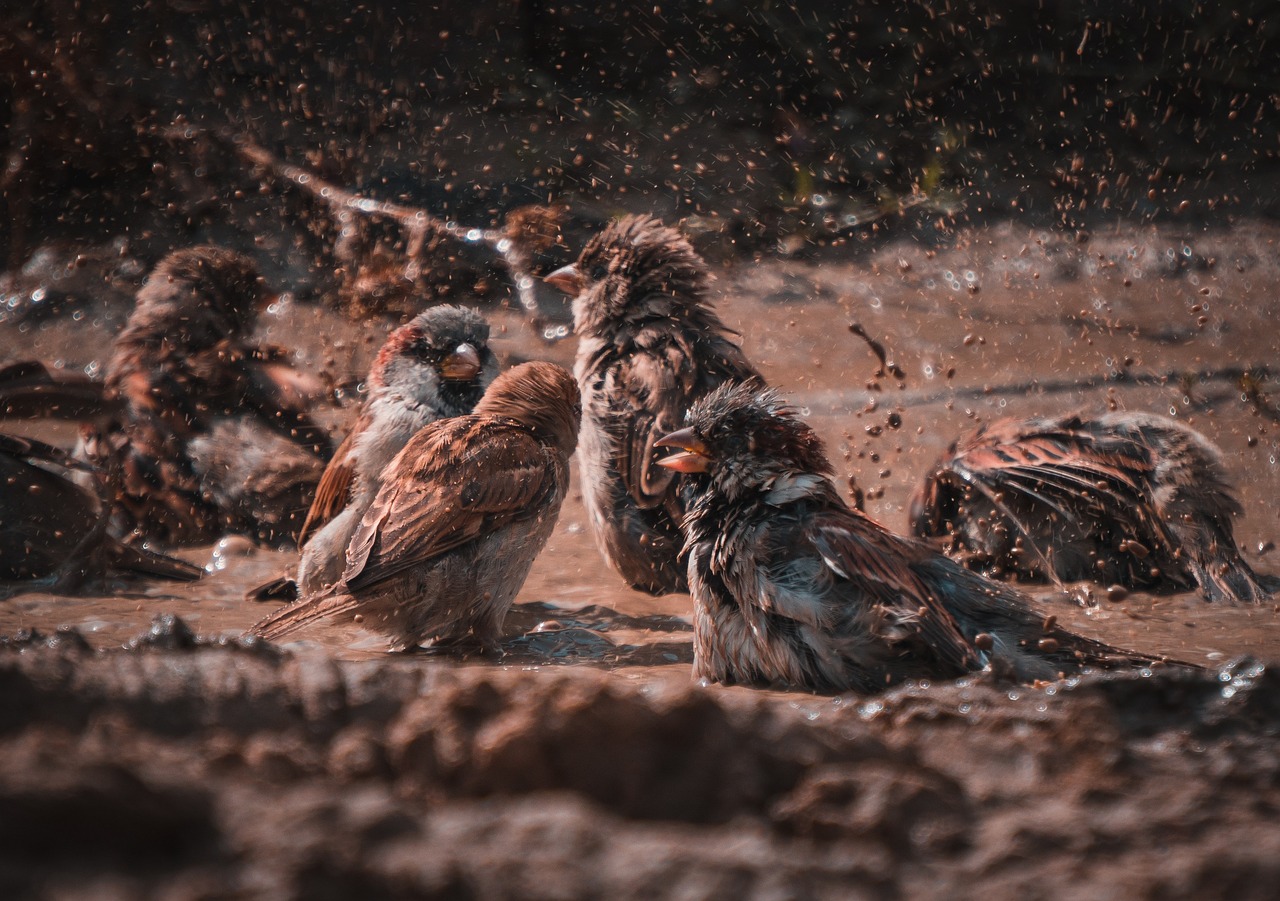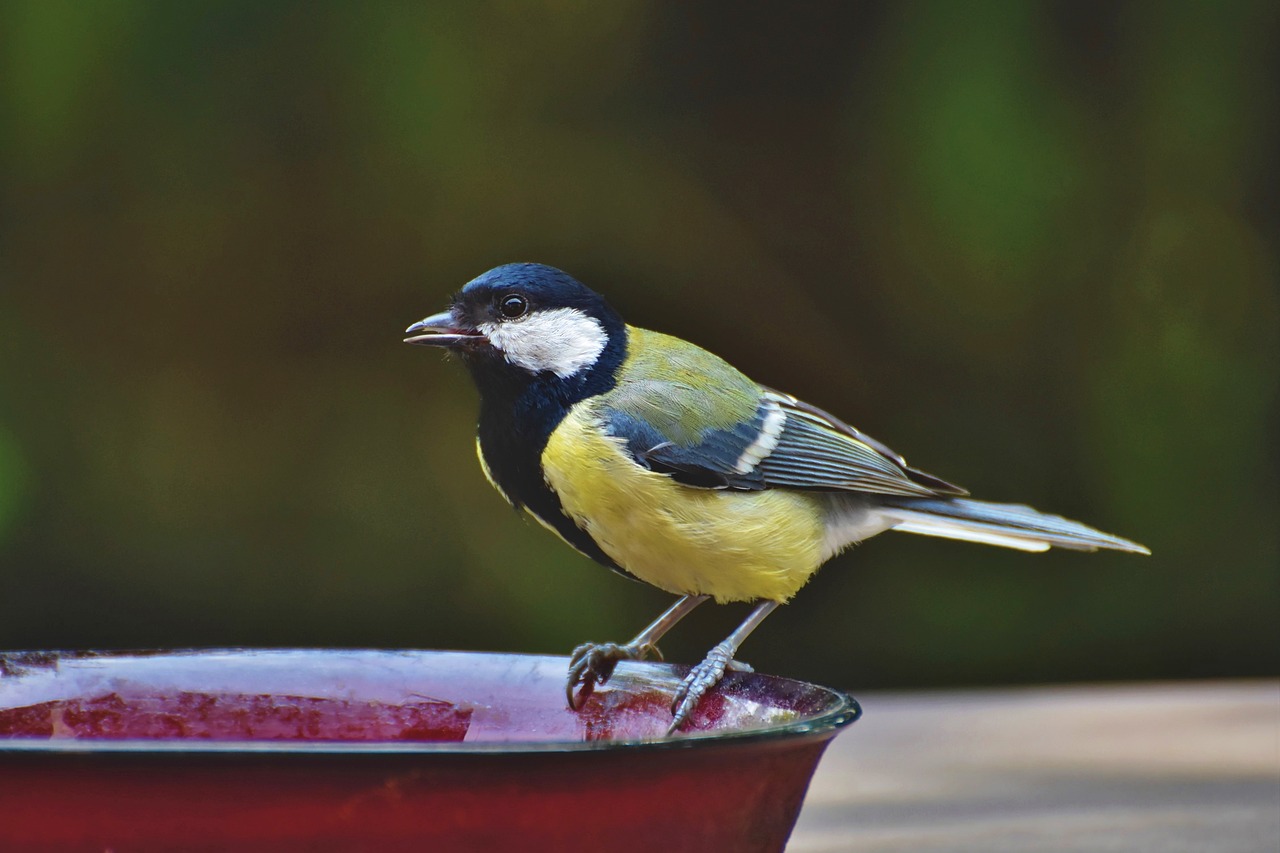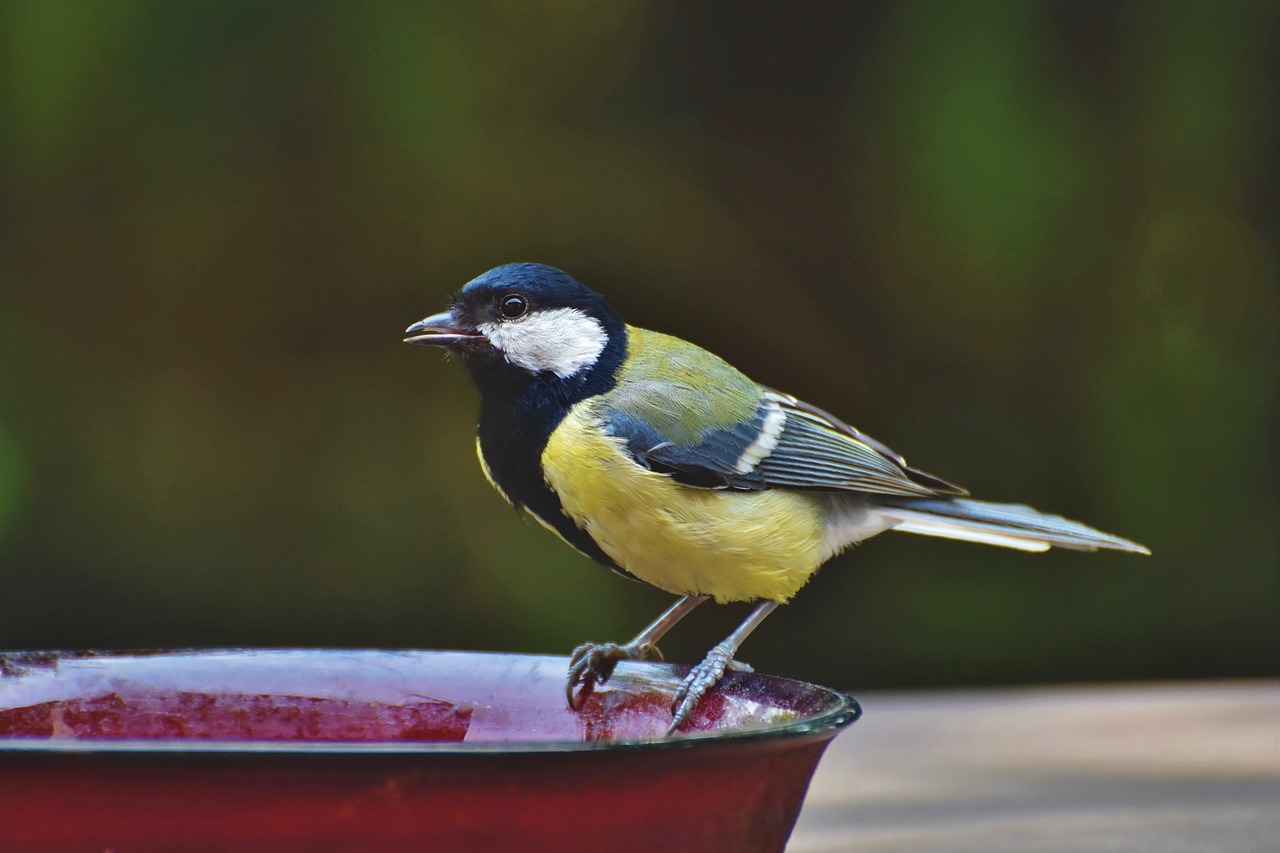During the harsh winter months, it is important to provide care and support for our feathered friends. One essential aspect of winter bird care is providing a heated bird bath. As temperatures drop, natural sources of water freeze, making it difficult for birds to find a drink or clean themselves. By installing a heated bird bath, you can ensure that birds have access to fresh water and can maintain their hygiene even in freezing conditions. Not only does this help birds survive the winter, but it also provides an opportunity for birdwatchers to observe a wide variety of species up-close. With a heated bird bath, you can make a significant impact on the well-being of our feathered friends while enjoying the beauty of nature in the comfort of your own backyard.

Understanding the Importance of a Heated Bird Bath
Bird drinking behavior in winter
In the winter, birds face many challenges in finding water to drink. Freezing temperatures can cause natural water sources like ponds, streams, and birdbaths to freeze over, making it difficult for birds to access water. This lack of water can lead to dehydration, which can be fatal for birds. Understanding bird drinking behavior in winter is crucial in realizing the importance of a heated bird bath.
The role of heated bird baths
Heated bird baths play a vital role in providing birds with a reliable source of water during the winter months. With a heating element, these bird baths prevent the water from freezing, ensuring that birds have access to clean and fresh water at all times. Heated bird baths are designed to provide a warm and comfortable environment for birds, promoting their overall health and well-being.
Impacts of freezing temperatures on birds
Freezing temperatures can have detrimental effects on birds. Without access to unfrozen water, birds may become dehydrated and unable to maintain their normal bodily functions. In addition, freezing temperatures can make it difficult for birds to find food, leading to reduced energy levels and weakened immune systems. Providing a heated bird bath can help mitigate these impacts and support the survival of birds during the harsh winter months.
Selecting the Right Heated Bird Bath
Considerations for size and depth
When selecting a heated bird bath, it’s important to consider the size and depth of the bath. The size should be appropriate for the types of birds you want to attract, allowing them enough space to comfortably bathe and drink. The depth should be shallow, typically no more than a few inches, to ensure that birds can safely access the water without risk of drowning.
Temperature control features
Look for heated bird baths with temperature control features. These features allow you to adjust the temperature of the water, ensuring that it stays at a comfortable level for the birds. Some heated bird baths even have built-in thermostats that automatically regulate the temperature, providing peace of mind that the water will never get too hot or too cold.
Material and design options
Heated bird baths are available in a variety of materials and designs. Consider a heated bird bath made from durable and easy-to-clean materials such as plastic, resin, or concrete. Look for designs that have textured surfaces to provide traction for the birds’ feet and prevent slipping. Additionally, choose a design that complements your outdoor space and enhances its aesthetic appeal.

Installation and Placement of a Heated Bird Bath
Proper bird bath placement
The placement of a heated bird bath is crucial in attracting birds and ensuring their safety. Ideally, the bird bath should be placed in an open area, away from dense vegetation where predators could hide. Position it near natural shelter such as bushes or trees, allowing birds to quickly retreat if they feel threatened. Additionally, make sure the bird bath is easily accessible and visible to birds flying overhead.
Safety tips for electric bird baths
If you opt for an electric heated bird bath, it’s essential to follow safety guidelines. Ensure that the bird bath is properly grounded and that the electrical components are protected from water exposure. Use a ground fault circuit interrupter (GFCI) outlet to prevent electrical shocks. Regularly inspect the bird bath for any signs of wear or damage to the electrical cord or heating element, and promptly address any issues.
Options for solar-powered heated bird baths
If you prefer a more eco-friendly option, consider a solar-powered heated bird bath. These bird baths utilize solar energy to power the heating element, eliminating the need for electricity. Solar-powered heated bird baths are not only environmentally friendly but also cost-effective, as they reduce energy consumption. Ensure that the solar panels are placed in an area with maximum sunlight exposure to optimize their efficiency.
Routine Maintenance for Heated Bird Baths
Regular cleaning
To maintain a healthy environment for the birds, it’s crucial to regularly clean your heated bird bath. Empty the water and scrub the bath with a mild detergent solution to remove any algae or debris. Rinse thoroughly and refill with clean water. Cleaning should be done at least once a week, or more frequently if the bird bath becomes visibly dirty.
Checking and maintaining temperature regulators
Regularly check the temperature regulators of your heated bird bath to ensure they are functioning properly. Test the water temperature periodically to ensure that it is within a safe and comfortable range for birds. If you notice any issues with the temperature control, contact the manufacturer for assistance or consider having a professional inspect and repair the bird bath.
Preventing and removing ice build-up
Even with a heated bird bath, ice can still form on the surface during extremely cold weather. To prevent ice build-up, consider placing a small aerator or moving water device in the bird bath. The movement of the water will help prevent freezing. If ice does form, carefully remove it using a gentle approach to avoid damaging the bird bath. Never use hot water or salt to melt the ice, as these can be harmful to the birds.

Popular Brands for Heated Bird Bath
Kaytee
Kaytee specializes in bird seeds, feeders, and accessories. Their heated bird baths offer quality and durability, ensuring a reliable water source for birds during winter.
Perky-Pet
Perky-Pet is known for its wide range of bird feeders. Their heated bird baths are designed with bird safety and comfort in mind, providing a heated oasis for birds in cold weather.
Droll Yankees
Droll Yankees offers high-quality bird feeders, especially for songbirds. Their heated bird baths combine functionality with aesthetics, attracting a variety of bird species to your backyard.
Wagner’s
Wagner’s is a leading brand for various bird seed mixes. Their heated bird baths provide a winter haven for birds, supporting their hydration needs and promoting their well-being.
Brome Bird Care
Brome Bird Care is renowned for its squirrel-proof bird feeders. Their heated bird baths incorporate innovative squirrel-proofing technology, ensuring that birds have uninterrupted access to water.
Additional Supplies for Winter Bird Care
Winter bird food options
In addition to a heated bird bath, providing the right bird food is essential for winter bird care. Consider offering high-energy food such as suet, black oil sunflower seeds, nyjer seeds, and dried mealworms. These food options help birds replenish their energy reserves and stay warm during the cold winter months.
Protective bird shelters
Creating bird shelters in your yard can provide vital protection for birds during harsh weather conditions. Install birdhouses or nesting boxes in safe and sheltered areas. These shelters provide birds with a place to roost and seek refuge from cold winds and precipitation.
Heated bird perches
Installing heated bird perches can provide additional comfort for birds during winter. These perches feature a heating element that warms the birds’ feet, preventing frostbite and promoting circulation. Heated perches can be attached to existing bird feeders or placed near bird shelters.
Winter Dangers for Birds and How to Mitigate Them
Hazardous weather conditions
Winter weather conditions such as snowstorms and blizzards can pose significant risks to birds. Ensure that bird feeders, bird shelters, and heated bird baths are securely installed and capable of withstanding strong winds and heavy snowfall. Regularly check these structures for any damage and make necessary repairs.
Predators
Predators can be a threat to birds, especially during the winter when food sources are scarce. Take steps to deter predators from your yard, such as installing motion-activated lights or placing predator deterrents near bird feeders and bird baths. Keep bushes and shrubs trimmed to minimize hiding spots for predators.
Disease and sickness
During winter, birds may be more susceptible to diseases and illnesses due to stress and compromised immune systems. Keep bird feeders and bird baths clean to prevent the spread of bacteria and parasites. If you notice sick or injured birds, contact a local wildlife rehabilitator for assistance.
Species-Specific Winter Bird Care
Care for songbirds
Songbirds, such as cardinals, chickadees, and finches, require special care during winter. Offer a variety of bird food options, including seeds, nuts, and suet. Place multiple bird feeders in different areas of your yard to accommodate the feeding preferences of different songbird species.
Feeding and care for hummingbirds
Although it may seem surprising, hummingbirds also need care during the winter months. If you live in an area where hummingbirds stay during winter, provide a heated hummingbird feeder with a nectar solution that doesn’t freeze. Regularly clean and refill the feeder to ensure it remains a reliable food source for these amazing birds.
Species that benefit from heated bird baths
Various bird species can benefit from heated bird baths during winter. Waterbirds such as ducks and geese, as well as smaller species like sparrows and juncos, greatly appreciate having access to unfrozen water. By providing a heated bird bath, you can attract a diverse range of birds to your backyard and contribute to their winter survival.
The Role of Conservation Organizations in Bird Care
Contributions of Audubon
Audubon is a notable organization that plays a crucial role in bird conservation. In addition to their efforts in preserving bird habitats, Audubon also provides resources and guidance on bird care. They offer educational programs and workshops that help bird lovers understand the importance of providing proper care, including access to heated bird baths, during the winter months.
Local conservation efforts
Beyond national organizations, many local conservation groups work tirelessly to protect and care for birds in their respective regions. These organizations often collaborate with communities, businesses, and individuals to promote bird-friendly practices such as installing heated bird baths. Getting involved with local conservation efforts can have a significant impact on bird conservation and care initiatives.
How bird lovers can get involved
Bird lovers can actively contribute to bird care by supporting conservation organizations. This can be done through donations, volunteering, or participating in citizen science programs. By taking part in conservation initiatives, bird lovers can play a role in ensuring the well-being of birds and their habitats, including providing essential resources like heated bird baths.
Edge of Innovation: Technology in Bird Care
Benefits of squirrel-proof bird feeders
Squirrels can be a persistent problem for bird enthusiasts, often stealing bird food and damaging feeders. Squirrel-proof bird feeders have innovative designs that prevent squirrels from accessing the food while still allowing birds to feed comfortably. These feeders not only protect the bird food but also minimize the disturbances caused by squirrels.
New advancements in heated bird bath design
Advancements in heated bird bath design have made these essential winter accessories even more efficient and effective. Some heated bird baths now have insulation features that help retain warmth and minimize heat loss, making them more energy-efficient. Others have improved temperature control settings, providing optimal warmth for birds.
Role of technology in bird observation and study
Technology has revolutionized bird observation and study, allowing researchers and bird enthusiasts to gather valuable data and insights. Tools such as bird cameras, bird monitoring apps, and GPS tracking devices have made it easier to observe bird behaviors and migratory patterns. These technological advancements contribute to our understanding of birds’ needs and inform bird care practices, including the use of heated bird baths.
In conclusion, the importance of a heated bird bath in winter cannot be overstated. It provides birds with a vital water source, supports their well-being, and helps them survive freezing temperatures. By selecting the right heated bird bath, installing and maintaining it correctly, and considering additional supplies for winter bird care, you can create a welcoming environment for birds in your backyard. Furthermore, technology, conservation organizations, and species-specific care all play important roles in promoting bird care and improving our understanding of these incredible creatures. By taking steps to care for birds in winter, you contribute to their conservation and make a positive impact in their lives.
